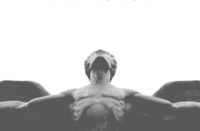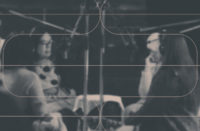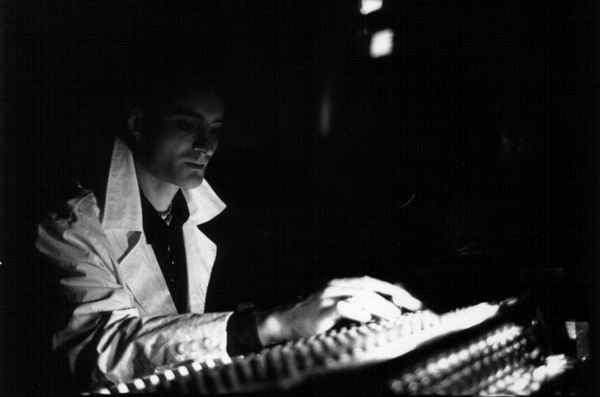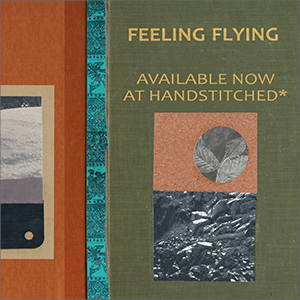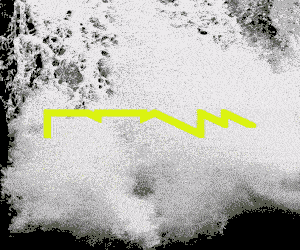“…Originally an outlet for handmade CD covers it was only later that Sonic Pieces was reborn as a record label as more and more artists turned to Monique in this new era of more personalized, hand-made packaging to have their material released with her signature style. This 3View article focuses on Greg Haines’ Until the Point of Hushed Support, Dustin O’Halloran’s Vorleben as well as F.S. Blumm & Nils Frahm’s Music for Lovers Music Versus Time…”
 (October 2010) Monique Recknagel’s boutique Sonic Pieces label has been releasing music for over three years now, beginning with ultra-limited, handmade CDRs for Nils Frahm, whose influence and output has been a staple of the label ever since. Originally an outlet for handmade CD covers it was only later that Sonic Pieces was reborn as a record label as more and more artists turned to Monique in this new era of more personalized, hand-made packaging to have their material released with her signature style.
(October 2010) Monique Recknagel’s boutique Sonic Pieces label has been releasing music for over three years now, beginning with ultra-limited, handmade CDRs for Nils Frahm, whose influence and output has been a staple of the label ever since. Originally an outlet for handmade CD covers it was only later that Sonic Pieces was reborn as a record label as more and more artists turned to Monique in this new era of more personalized, hand-made packaging to have their material released with her signature style.
Every initial run of a Sonic Pieces release comes housed in a hand-numbered gatefold wallet with cloth book-style cover, end-papers hand stamped by Monique and an accompanying gatefold liner notes booklet all slipped into a transparent plastic sleeve for protection. When demand for some of these releases later exceeded supply, letter-pressed second editions were released, which though they may lack the bookish charm of the first editions are nonetheless exquisitely presented.
The emphasis of Sonic Pieces’ output may lean towards the modern classical end of the spectrum but the label has also released dark ambient and folk albums so it refuses to pigeonhole itself. Look out for what promises to be a stunning, stripped-down album from Erik K Skodvin (Miasmah label-owner, one half of Deaf Center and Svarte Greiner) released on October 22nd under his own name, entitled Flare.
::..:::…..:..::….:::::..:::..:::::::……:::…::.:::….::::..:..:::…::…….:::::
 (Greg Haines :: Until the Point of Hushed Support) Greg Haines will be known to followers of Erik Skodvin’s Miasmah label for his Slumber Tides album, a collection of electronically treated post-classical works that, while elegiac and serene, was prone to a certain lack of subtlety in the post-processing department that often overwhelmed the overall experience.
(Greg Haines :: Until the Point of Hushed Support) Greg Haines will be known to followers of Erik Skodvin’s Miasmah label for his Slumber Tides album, a collection of electronically treated post-classical works that, while elegiac and serene, was prone to a certain lack of subtlety in the post-processing department that often overwhelmed the overall experience.
On his second long-player, Until The Point Of Hushed Support, released earlier this year, Haines may have pared back the use of electronic treatments but has more than compensated for this by not only playing the piano, church organ, cello, guitar and various percussive instruments himself but also employing the services of a string quintet, a saxophonist, pianist Nils Frahm and a vocalist, pushing his sound palette towards the realms of the Gothic. The majority of the live parts of this album were recorded in Grünewald Church (and this won’t be the last time it is mentioned in this article), a location favoured for its unique acoustic and ambient qualities, and Haines’ far more subtle post-processing and electronic treatments pay tribute to this.
The four tracks cover a good fifty minutes of music, “Industry vs Inferiority” opening with the faintest and most delicate of piano keys that are almost beyond hearing at first. “Marc’s Descent” soon ups the ante with emotionally charged orchestral sweeps and melancholy passages that initially remind one of Jóhann Jóhannsson’s “And in the endless pause there came the sound of bees.” It is the church organ that plays the dominant role here, underpinning everything with resonant bass tones but also conjuring a sense of unease through oddly discordant treble chords.
It flows directly into the fourteen-minute “In the event of a sudden loss” that travels through three distinctive territories, beginning with ghostly electronic chimes, gongs and reedy tones, the faintest of static in the far background occasionally revealing snatches of speech. A contra-bass fanfare heralds the second movement as rising and falling swathes of violin, viola and cello slowly ripple over repeating melodic chimes, latterly dissolving into an uneasy disquiet in its dying minutes.
It that Haines’ penchant for excess is still in evidence, however, the closing “Until the point of least resistance” at nineteen minutes long hardly an exercise in restraint. Beginning with a repeated, queasy electronic warble and then joined by delicate gongs, bells and wordless choral vocals it soon transforms into a string and organ dirge that increases in intensity, layering and volume to an almost deafening crescendo across the best part of six minutes. If you can fight your way past this burning core there follows a beautiful, echoing piano-led passage that gently escorts the listener to the point of least resistance.
Until The Point Of Hushed Support is not a subtle affair, but it is richer and more complex than first meets the eye; there are minute sonic details and elements that you may need high-end equipment to fully detect. Overpowering and almost harrowing when listened to from end to end it is an accomplished and rewarding work that you’ll need to be in the right frame of mind and mood to fully appreciate. [Listen | Purchase]
::..:::…..:..::….:::::..:::..:::::::……:::…::.:::….::::..:..:::…::…….:::::
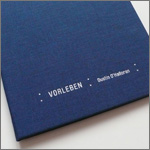 (Dustin O’Halloran :: Vorleben) The second of Sonic Pieces 2010 releases is this stunning live recording of Dustin O’Halloran’s virtuoso performance also recorded within the candlelit hallows of Grünewald Church on the night of June 19th, 2009. Do not be under any illusions – this music is purely and simply a recording of ten piano solos O’Halloran performed that evening, replete with audience noise and church acoustics. This naked presentation of the work serves only to heighten the mood and emotion that permeates O’Halloran’s performance, and the liner notes in the enclosed booklet illustrate that it was a concordantly emotional night for him too.
(Dustin O’Halloran :: Vorleben) The second of Sonic Pieces 2010 releases is this stunning live recording of Dustin O’Halloran’s virtuoso performance also recorded within the candlelit hallows of Grünewald Church on the night of June 19th, 2009. Do not be under any illusions – this music is purely and simply a recording of ten piano solos O’Halloran performed that evening, replete with audience noise and church acoustics. This naked presentation of the work serves only to heighten the mood and emotion that permeates O’Halloran’s performance, and the liner notes in the enclosed booklet illustrate that it was a concordantly emotional night for him too.
Still jet-lagged from the flight over from the US and having been informed one hour prior to performing that his grandmother had passed away, O’Halloran also documents “meeting” the church’s piano, a clearly beguiling instrument that, together with the evocative church setting has elicited a measured, thoughtful and cathartic performance from O’Halloran that can be clearly and touchingly heard throughout.
“Opus 54” is a moving opening that seizes ones attention, and I’m happy to say that Vorleben never lets go. Tempos are modulated and expressions move from the pianissimo to the fortissimo as the mood requires, and through it all we experience the romantic, as “Opus 23” describes a romantic dance, “Opus 28” a fluttering, heartfelt yearning, the dramatic as heard in “Opus 38” and the melancholy, mannered and introspective (“Prelude N.3,” “Opus 21” and the closing “Opus 37”).
It is clear that the surroundings and events of that evening truly affected O’Halloran’s performance – he himself states in the liner notes that it is the first of his live performances he is happy to see released – because this work is utterly drenched in emotion, atmosphere and serenity. It seems that Vorleben is German for “past,” probably a reference to the fact that many of the compositions on this live work appeared in volumes one and two of his previous “Piano Solos” albums. But it is doubly appropriate because the simple act of listening to Vorleben is powerful enough to transport you back to the night of its performance, an atmosphere so palpable it is as if the audience, O’Halloran and even Grünewald Church itself have taken a collective deep breath that is held right up until the final moments of applause. Utterly spellbinding.
::..:::…..:..::….:::::..:::..:::::::……:::…::.:::….::::..:..:::…::…….:::::
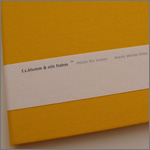 (F.S. Blumm & Nils Frahm :: Music for Lovers Music Versus Time) The third and most unusual release from the label in 2010 is this collaboration between F.S. Blumm and Nils Frahm, though the term “ensemble piece” seems far more apposite given the nature of Music For Lovers Music Versus Time. In the liner notes of the enclosed card booklet Blumm describes this as a remix album of sorts, collecting together the remnants of studio sessions, performances and collaborations that either never made it onto any of his previous recordings or were not featured as prominently as Blumm felt they deserved.
(F.S. Blumm & Nils Frahm :: Music for Lovers Music Versus Time) The third and most unusual release from the label in 2010 is this collaboration between F.S. Blumm and Nils Frahm, though the term “ensemble piece” seems far more apposite given the nature of Music For Lovers Music Versus Time. In the liner notes of the enclosed card booklet Blumm describes this as a remix album of sorts, collecting together the remnants of studio sessions, performances and collaborations that either never made it onto any of his previous recordings or were not featured as prominently as Blumm felt they deserved.
And so Blumm created Music for Lovers Music Versus Time, not so much an exercise in remixing, more recycling, to ensure that these performances were not wasted. Sonic Pieces stalwart Nils Frahm brings his signature piano playing to the mix and together they have improvised on top of these quite literal sonic pieces, adding structure to what might otherwise have been a lovely but chaotic mess.
Bells, chimes, guitar twangs, clarinet, contemplative piano and miscellaneous other scattered percussive chatter characterise opener “Kugler” and are prominent on many of the other tracks here. “Rone Re” – easily one of the album’s most successful recylcing experiements – is a forum for Frahm’s piano and Ulrich Wangenheim’s bass-clarinet and flute, cleverly enhanced by subtle, warped electronics. Luca Fadda’s breathy trumpets provide jazz structures and inflections to “Writing a Letter To Myself” and “Onward Onward,” the latter accompanied by a tinkling music box passage in its middle third and closing moments.
It’s not always entirely successful though. Despite a deep-rooted sense of improvisation in “Heber” that resembles the discordant and atonal improvisations of Derek Bailey on David Sylvian’s Samadhisound releases, Frahm seems to have concluded that the only way to pull the disparate parts together is with monotonously repeated piano keys and chords whose relentlessness tries the patience a little when the technique is then re-used in the following track, “Lenz.”
The canary-yellow binding and pale blue liner notes all resonate with the freshness of the pieces on this release that taken together are the sonic equivalent of a vibrant, fresh fruit salad, bursting with contrasting but complimentary flavours, some of which will appeal more than others. Ebullient, summery, floral, delicate and sometimes flawed, it may not be the strongest entry in Sonic Piece’s catalog, but it is an interesting experiment nevertheless, full of love and respect for the musicians whose work is featured within. [Listen | Purchase]
::..:::…..:..::….:::::..:::..:::::::……:::…::.:::….::::..:..:::…::…….:::::
All releases above are out now on Sonic Pieces.







